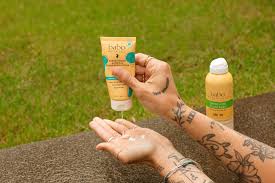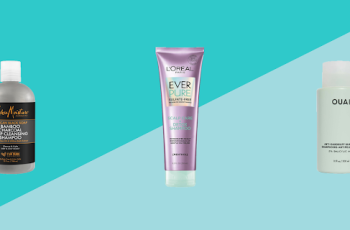
Tattoo Aftercare – How to Heal Tattoos Faster
Getting a new tattoo is an exciting experience, but what follows—tattoo aftercare—can often feel tedious.
The weeks after your tattoo session are crucial to ensure proper healing, color retention, and skin health.
While patience is essential, there are safe, dermatologist-approved ways to accelerate the healing process and protect your new body art from complications.
In this guide, we’ll walk you through the science of tattoo healing, the best products and practices to use, and what to avoid during the healing period.
How Long Does It Take a Tattoo to Heal?
Tattoo healing time varies depending on:
The size and location of the tattoo
The colors used
Your individual skin type and healing rate
In most cases, the top layer of skin will begin to heal in 2–4 weeks, though complete healing (including the deeper layers) may take up to several months.
During the healing process, it’s common to experience:
Redness
Scabbing
Peeling
Itchiness
Sensitivity to touch and sun
What Happens to the Skin After Getting a Tattoo?
Tattooing involves repeated micro-injuries to the skin as pigment is deposited into the dermis. The body responds to this as it would to a wound:
Bleeding occurs immediately as the skin is punctured.
Inflammation sets in, accompanied by redness and swelling.
The skin begins peeling and scabbing as it repairs itself.
Over time, the tattooed area regenerates and the ink becomes stable under the surface.
During this recovery process, your skin’s barrier function is compromised, making it more prone to:
Dehydration
Infection
Pigment loss or fading
Oxidation from UV exposure or open air
Tattoo Healing Timeline: What to Expect
Phase What Happens Key Aftercare Focus
Day 1–3 Swelling, oozing, bleeding Gentle cleansing and protective covering
Day 4–14 Scabbing, peeling, dryness Moisturizing, infection prevention
Week 3–4+ Peeling slows, tattoo looks clearer Hydration, sun protection
1–3 Months Deeper layers continue healing Resume active ingredients if skin is stable
Top Tattoo Aftercare Products to Heal Faster
1. Tattoo Ointments
Ointments are the first line of defense in tattoo aftercare. Look for ingredients that are:
Antimicrobial (to reduce infection risk)
Moisturizing (to support barrier repair)
Antioxidant-rich (to protect pigments and skin cells)
Soothing and anti-inflammatory
Some tattoo ointments even include growth factors to stimulate healing.
Look for these features in your ointment:
Non-comedogenic
Fragrance-free
Occlusive, but breathable
💡 Pro tip: Mineral oil-based ointments are commonly used and work well, but opt for those that also contain healing ingredients like panthenol, hyaluronic acid, or ceramides.
Recommended Products:
[[PP15, PP16]]
2. Gentle Cleansers for Tattoo Scabs
When scabbing begins (around day 4), cleansing is crucial to prevent infection and avoid irritation.
Choose a fragrance-free, hydrating cleanser that will:
Remove excess oil and dirt without stripping
Prevent bacterial buildup
Reduce inflammation and redness
Avoid foaming cleansers, alcohol-based toners, or anything exfoliating.
Recommended Products:
[[PP14, PP19, PP28]]
Tattoo Scabbing: What You Need to Know
Scabbing is a normal part of healing, but it can be annoying, itchy, and even alarming if you’re not prepared.
⚠️ Do NOT pick, scratch, or scrub scabs. Doing so may:
Pull out pigment
Cause scars
Create uneven healing
Introduce bacteria into the skin
To manage tattoo scabs:
Cover with a sterile bandage or Tegaderm if needed
Moisturize consistently with ointment
Cleanse gently morning and night
What to Avoid While Your Tattoo Heals
To protect your skin and ink, steer clear of these ingredients and habits:
❌ Skincare Ingredients to Avoid:
Ascorbic Acid (Vitamin C) – can fade pigments
Exfoliants (AHAs/BHAs like glycolic or salicylic acid)
Retinoids – interfere with healing and pigment retention
Low pH formulas – may irritate open wounds
❌ Lifestyle & Environmental Risks:
Direct sun exposure – fresh tattoos are highly photosensitive
Swimming – pools and hot tubs can introduce infection
Tight clothing or friction – causes scab disruption
Shaving over the tattoo – only resume once skin is fully healed
Are Tattoos Safe? Side Effects to Watch For
In most cases, tattoos are safe when performed in clean, professional environments. However, be aware of potential risks:
🔬 Infections
Bacterial (Staphylococcus aureus)
Viral (Hepatitis B or C)
From contaminated needles or improper aftercare
⚠️ Toxic Pigments
The FDA does not currently regulate tattoo pigments. Some inks may contain mercury, cinnabar, or other toxic compounds.
💬 Tip: Ask your tattoo artist about their ink ingredients, especially if you have known allergies or sensitivities.
⚠️ Allergic Reactions
Reactions to tattoo ink are rare but possible—especially red pigments. Symptoms may include swelling, rash, and intense itching.
Can Exfoliants Ruin a Tattoo?
Yes. Exfoliating ingredients—like retinoids or acids—accelerate skin turnover, which can remove pigment and distort linework.
Avoid all exfoliants on new tattoos until:
The area is no longer peeling
The skin tone is even
No redness or sensitivity remains (typically 4+ weeks)
Tattoo Aftercare Routine: Step-by-Step
Here’s a dermatologist-recommended daily routine to help your tattoo heal faster and more comfortably:
🌞 Morning Routine
Gently cleanse with lukewarm water and a mild, hydrating cleanser.
Pat dry with a clean paper towel.
Apply a thin layer of healing ointment.
Cover the tattoo if it may be exposed to friction or sunlight.
🌙 Evening Routine
After showering, cleanse the area again.
Apply ointment or a rich, soothing moisturizer (depending on the product’s instructions).
Cover lightly if needed for overnight protection.
Best Overall Products for Tattoo Aftercare
Whether you’re managing peeling, dryness, or simply want to accelerate healing, these products support all stages of tattoo aftercare:
Recommended:
[[PP15, PP16, PP19, M43, C21]]
Personalize Your Tattoo Aftercare by Skin Type
Your skin type plays a major role in how your tattoo heals. If you have dry, oily, sensitive, or combination skin, your routine and product choices may need adjusting.
🎯 Take the Skin Type Solutions Quiz to learn your Baumann Skin Type and get personalized product recommendations that work with—not against—your skin’s natural healing process.
Final Thoughts: How to Heal Tattoos Faster and Smarter
Tattoo healing is part science, part skincare. While there’s no overnight fix, following the right steps can shorten recovery time, prevent complications, and protect your tattoo’s color and clarity.
By using soothing, barrier-repairing products, avoiding irritants, and being diligent about your routine, you’ll enjoy beautiful, long-lasting results from your new ink.


